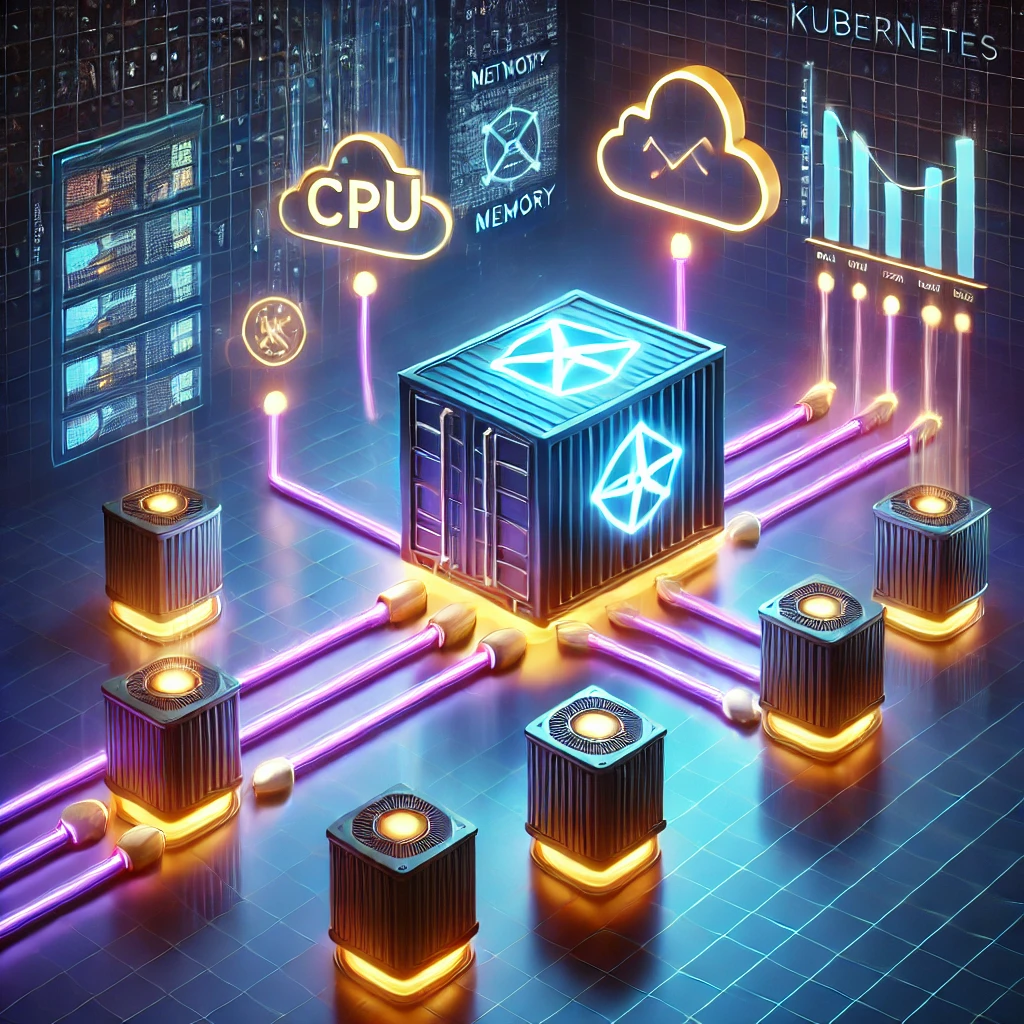
Unleashing Container Performance: A DevOps Guide to Optimization
Security Best Practices: Protecting Your Containers
Have you ever felt the frustration of sluggish containers dragging down your application performance? Discover the secrets to unlocking unparalleled container speed and efficiency, transforming your DevOps workflow from chaotic to streamlined.
Introduction: Unveiling the Secrets to Container Optimization :-
The Allure of Containers: Why Optimization Matters :-
- Containers have revolutionized software development and deployment, offering portability, scalability, and efficiency. But their potential is only fully realized when properly optimized. Unoptimized containers can lead to resource waste, performance bottlenecks, and increased costs. Mastering container optimization is not just about improving speed; it's about maximizing the return on your investment in containerization technology. It ensures your applications run smoothly, efficiently, and cost-effectively.
- Consider a scenario where a microservice running in a container consumes excessive memory. This might lead to instability, slow response times, and potentially the crashing of other services sharing the same node. Optimizing the container, by adjusting resource limits and requests, can prevent such issues and ensure a stable and responsive application. Effective optimization translates directly into a smoother user experience and improved business outcomes.
Setting the Stage: Essential Prerequisites :-
- Before diving into optimization techniques, it’s crucial to lay a solid foundation. This includes having a thorough understanding of containerization principles, choosing the right tools, and establishing robust monitoring and logging practices. A well-defined DevOps strategy is essential to streamline the optimization process and ensure consistency across your containerized infrastructure. It involves a collaborative approach where developers, operations teams, and security personnel work together to ensure seamless performance and security.
- For example, a clear understanding of the differences between resource limits and requests in container orchestration systems like Kubernetes is fundamental. Limits define the maximum resources a container can consume, while requests indicate the minimum resources it needs. Misconfiguring these parameters can either starve containers of necessary resources or allow them to consume more than intended, impacting overall system stability and efficiency. This necessitates a well-defined process of monitoring, analyzing, and adapting resource requests based on observed usage patterns.
Mastering Container Performance: Key Strategies
Image Optimization: Size Matters :-
- Smaller container images translate directly into faster deployment times and reduced resource consumption. A bloated image can significantly impact the speed and efficiency of your application. Minimizing image size is a crucial step towards optimizing container performance. This can be achieved through several strategies, including using multi-stage builds, carefully selecting a base image, and leveraging build caches.
- For instance, a base image containing unnecessary libraries or packages can dramatically increase the image size. Choosing a smaller and more relevant base image is a significant step toward optimization. Similarly, leveraging multi-stage builds allows you to separate build steps from the final image, removing unnecessary artifacts and resulting in a more streamlined and efficient deployment process. Tools such as Docker can significantly aid in managing and refining these image layers.
Multi-Stage Builds: Streamlining the Process :-
- Multi-stage builds allow you to separate the build process from the final runtime image, leading to smaller and more secure images. This is because unnecessary files from the build process are not included in the final runtime image.
Choosing the Right Base Image :-
- Selecting a minimal and appropriate base image can considerably reduce image size. Avoid oversized images that include unnecessary tools or libraries. Carefully select an image that meets your application's specific needs.
Leveraging Build Caches for Efficiency :-
- Build caches store the results of previous build steps, accelerating future builds. This can significantly improve the efficiency of your CI/CD pipeline. Ensure your build environment is configured to use and leverage build caching mechanisms.
Resource Allocation: Fine-tuning for Peak Efficiency :-
- Efficient resource allocation is critical for optimizing container performance. Carefully defining resource limits and requests for your containers prevents resource contention and ensures optimal resource utilization. Tools such as Kubernetes and Vertical Pod Autoscaling (VPA) can assist in this process.
- For example, setting appropriate CPU and memory limits prevents a single container from monopolizing resources and impacting other containers running on the same node. This fine-grained control ensures fair resource sharing and prevents performance bottlenecks. Observing resource consumption patterns over time is vital for making informed decisions about resource allocation and optimization.
CPU and Memory Management :-
- Carefully manage CPU and memory allocation to prevent resource starvation or over-allocation. Use monitoring tools to observe resource utilization patterns.
Understanding Resource Limits and Requests :-
Limits define the maximum resources a container can use, while requests define the minimum. Configuring these correctly is key to efficient resource management.
Vertical Pod Autoscaling (VPA) :-
- VPA automatically adjusts the resource requests and limits of your pods based on observed resource usage. This helps to optimize resource utilization and prevent resource contention.
Network Optimization: Minimizing Latency :-
- Network latency can significantly impact container performance. Optimizing network communication between containers and services is crucial for a high-performing application. Efficient networking strategies, such as using a suitable Container Network Interface (CNI), and leveraging service meshes for advanced network control, are important considerations.
- For example, using a service mesh like Istio can improve network performance by handling service discovery, traffic management, and security policies. This improves resilience and reduces latency. Careful configuration of the network policies within the service mesh is essential to prevent unnecessary network traffic and optimize overall performance. Regular monitoring of network latency is crucial for identifying and addressing potential bottlenecks.
Efficient Networking Strategies :-
- Implement efficient networking strategies to minimize latency and ensure reliable communication between containers.
Container Network Interface (CNI) :-
- Choose the appropriate CNI plugin for your environment. CNIs handle network configuration within the container runtime.
Service Mesh for Advanced Network Control :-
- Service meshes like Istio or Linkerd provide advanced networking capabilities, such as traffic management and security policies.
Monitoring and Observability: Keeping a Pulse on Performance :-
- Continuous monitoring is crucial for identifying and resolving performance bottlenecks. Establish robust monitoring practices to track key metrics, use appropriate monitoring tools, and implement effective alerting and troubleshooting mechanisms. A proactive approach to monitoring helps prevent minor issues from escalating into major disruptions.
- For instance, monitoring CPU utilization, memory usage, network latency, and request response times can provide insights into performance issues. Tools like Prometheus, Grafana, and Jaeger can be used to collect and visualize this data, facilitating prompt identification and resolution of performance bottlenecks. Alerting systems should be configured to notify relevant teams of critical issues, ensuring timely intervention and minimizing the impact on application availability and performance.
Key Metrics to Track :-
- Identify and track key performance indicators (KPIs) to monitor container health and performance.
Leveraging Monitoring Tools :-
- Utilize monitoring tools such as Prometheus, Grafana, and Jaeger to collect and visualize performance data.
Alerting and Troubleshooting :-
- Implement robust alerting mechanisms to be notified of performance issues and develop effective troubleshooting strategies.
Advanced Techniques for Container Optimization
Container Orchestration: Kubernetes Deep Dive :-
- Kubernetes is a powerful container orchestration platform that provides advanced features for managing and scaling containerized applications. Understanding and leveraging Kubernetes' resource management capabilities, horizontal pod autoscaling (HPA), and networking features is crucial for advanced container optimization.
- Effective resource management in Kubernetes involves setting appropriate resource limits and requests for pods, using namespaces to isolate workloads, and employing techniques like resource quotas to manage resource consumption across your cluster. HPA dynamically scales the number of pods based on observed resource usage or application metrics. Kubernetes networking ensures effective communication between pods, services, and external systems. Understanding these functionalities is pivotal for superior containerized application performance.
Resource Management in Kubernetes :-
- Kubernetes provides robust tools for managing resources, including setting resource limits and requests for pods.
Horizontal Pod Autoscaling (HPA)
- HPA automatically scales the number of pods based on observed resource usage or application metrics.
Kubernetes Networking :-
- Kubernetes provides robust networking capabilities, including service discovery and network policies.
Optimizing for Specific Workloads :-
- Different workloads have unique optimization requirements. Optimizing for database containers, microservices, and AI/ML workloads demands a nuanced approach, considering factors such as data persistence, inter-service communication, and computational resource needs. Understanding the specifics of your application's architecture and resource utilization is key to effective optimization.
- For example, database containers often require careful configuration of storage, ensuring sufficient I/O performance. Microservices necessitate efficient communication protocols and service discovery mechanisms. AI/ML workloads, on the other hand, often demand access to specialized hardware, such as GPUs, requiring careful resource allocation and cluster configuration. A tailored optimization strategy for each workload type ensures optimal performance and scalability.
Database Containers :-
Optimize database containers by ensuring sufficient storage I/O performance and appropriate resource allocation.
Microservices :-
- Optimize microservices by ensuring efficient inter-service communication and employing techniques like service meshes.
AI/ML Workloads :-
- Optimize AI/ML workloads by ensuring access to specialized hardware, such as GPUs, and carefully managing resource allocation.
Security Best Practices: Protecting Your Containers :-
- Security should be a paramount concern in container optimization. Implementing robust security practices, including regular image scanning, runtime security measures, and effective secrets management, is crucial for preventing vulnerabilities and protecting your applications. A proactive approach to security strengthens your infrastructure and ensures the confidentiality, integrity, and availability of your containerized applications.
- For example, regularly scanning container images for vulnerabilities helps identify and address security flaws before they can be exploited. Runtime security measures like security contexts and network policies enhance the security posture of your containers during operation. Employing secure secrets management practices, such as using Kubernetes Secrets or dedicated secret management tools, prevents sensitive information from being exposed. Integrating security best practices throughout the entire container lifecycle is vital for safeguarding your applications.
Image Scanning :-
- Regularly scan container images for vulnerabilities to ensure the security of your applications.
Runtime Security :-
- Implement runtime security measures to protect your containers during operation.
Secrets Management :-
- Utilize secure secrets management techniques to protect sensitive information.
Conclusion: Embracing the Future of Containerized Applications :-
- Container optimization is an ongoing process that requires continuous monitoring, analysis, and refinement. By implementing the strategies outlined in this guide, you can unlock the full potential of your containerized applications, ensuring high performance, scalability, and efficiency. Staying updated with the latest technologies and best practices in the field of containerization is essential for maintaining a competitive edge and building robust and efficient systems.
- Remember, the key to successful container optimization lies in a holistic approach that integrates image optimization, resource management, network optimization, and robust monitoring practices. By combining these elements with a strong security focus, you can build a highly efficient and secure containerized infrastructure that supports your business objectives. The journey of container optimization is a continuous cycle of improvement, adaptation, and refinement.
